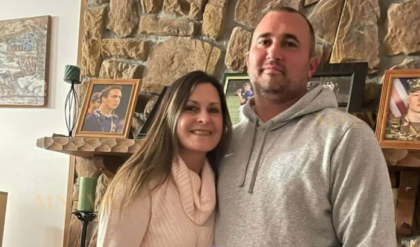When people think of Tupac Shakur in 1996, they often recall the raw fire of his music, the intensity of his politics, and the turbulence of his final months. What few realize, however, is that during that same year, Pac was stepping into a world far removed from street battles and studio sessions — the glittering, high-stakes universe of international fashion.
On this very day in 1996, 2Pac and Kidada Jones were spotted at JFK Airport in New York, boarding a flight to Milan for Men’s Fashion Week. For fans, the candid sighting was a rare glimpse of Pac in transition — not the revolutionary MC or the embattled defendant, but a man balancing love, art, and an expanding sense of identity.

The Journey to Milan
According to Frank Alexander, Tupac’s longtime bodyguard and confidant, the trip was made possible through connections in Kidada Jones’ circle. With the help of Quincy Jones’ office and Kidada’s friend Carla, who worked in PR at Vibe magazine, Tupac was invited to attend a whirlwind schedule of twelve fashion shows, after-parties, and exclusive gatherings.
Frank recalled in his memoir Got Your Back:
“Before we made it to Italy, we had to meet with Kidada in New York at the airport…”

This was no small detour. For Tupac, who was often portrayed solely as the embodiment of hip-hop’s aggression, the trip represented something more — a chance to be seen as multidimensional, as a cultural figure who could stand shoulder to shoulder with the world of couture.
Hip-Hop Meets High Fashion
The 1990s were a pivotal era for both hip-hop and fashion. Designers like Gianni Versace were opening their runways to artists who embodied edge and innovation. Tupac, with his charisma and aura, was a natural fit for this new era of style-meets-sound.

In Milan, Pac and Kidada were expected to sit front row alongside some of the most influential names in entertainment and fashion. Twelve shows in one week — an intense itinerary that underscored just how much doors were opening for him outside of music.

Imagine the juxtaposition: Tupac, known for his bandanas and Timberlands, suddenly immersed in a world of tailored suits, avant-garde collections, and champagne-soaked afterparties. It wasn’t a contradiction — it was proof of his versatility, his ability to shift between worlds while staying authentically himself.
The Private Side of Pac
What makes this moment so poignant is that it revealed another side of Tupac — not just the rapper, the activist, or even the movie star, but the man in love, traveling with Kidada Jones, exploring new opportunities, and living life on his own terms.
Even at an airport, even on the move, Pac carried culture with him. He wasn’t just a participant in hip-hop; he was its global ambassador, bringing its energy into spaces that had once seemed inaccessible.

Legacy in Motion
Today, looking back at that fleeting moment in 1996, it feels almost symbolic. Just months before his death, Tupac was expanding his horizons, merging street energy with high fashion, rap with global culture. It was a reminder that his artistry wasn’t confined to one lane — he was, and remains, culture in motion.

For fans, the image of 2Pac and Kidada at JFK isn’t just a piece of trivia. It’s a snapshot of what might have been: a legend stepping into new arenas, reshaping how the world saw him, and proving that hip-hop was never just music — it was a movement destined to infiltrate every corner of culture.



